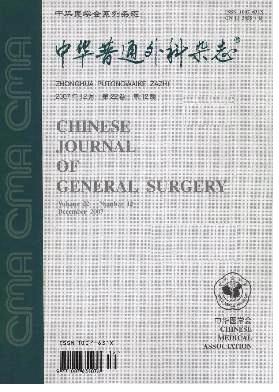Correlation between maximum thickness of carotid plaque and postoperative complications of CAS in patients with severe carotid stenosis
引用次数: 0
Abstract
Objective To investigate the relationship between the maximum thickness of carotid atherosclerotic plaque and the incidence of complications after carotid stenting in patients with severe carotid stenosis. Methods The clinical data of 85 patients with severe carotid stenosis undergoing CAS were analyzed. The maximum thickness of carotid plaque was evaluated according to ultrasound imaging data.Patients were divided into two groups according to the optimal threshold value: 0.435 mm, which calculated in the ROC curve of plaque thickness. The incidence of complications within two years after CAS was analyzed. Results 85 patients were followed up for 2 years: restenosis occurred in 12 cases, the incidence rate was 14.1%, which was significantly correlated with the maximum thickness of atherosclerotic plaque(P=0.002). Postoperative restenosis occurred in 2 cases (3.70%) in group A and 10 cases (32.26%) in group B(P<0.001); Three cases (9.68%) suffered from relapsing cerebral infarction in group B compared to none in group A(P=0.020). Conclusion With the carotid plaque growing thicker, the incidence of restenosis after CAS in patients with carotid stenosis increases. Especially in patients whose maximum plaque thickness is more than 0.435 mm, the incidence of restenosis postoperative increases remarkably. Key words: Atherosclerosis; Complications; Maximum thickness of plaque; Carotid artery stenting颈动脉严重狭窄患者颈动脉斑块最大厚度与CAS术后并发症的关系
目的探讨重度颈动脉狭窄患者颈动脉粥样硬化斑块最大厚度与支架置入术后并发症的关系。方法对85例重度颈动脉狭窄患者行CAS的临床资料进行分析。根据超声成像资料评估颈动脉斑块的最大厚度。根据斑块厚度ROC曲线计算的最佳阈值0.435 mm将患者分为两组。分析CAS术后2年内并发症的发生率。结果85例患者随访2年,发生再狭窄12例,发生率为14.1%,与动脉粥样硬化斑块最大厚度显著相关(P=0.002)。A组术后再狭窄2例(3.70%),B组术后再狭窄10例(32.26%)(P<0.001);B组脑梗死复发3例(9.68%),A组无复发(P=0.020)。结论颈动脉狭窄患者颈动脉粥样硬化后再狭窄的发生率随着颈动脉斑块的增厚而增加。尤其是最大斑块厚度大于0.435 mm的患者,术后再狭窄的发生率明显增加。关键词:动脉粥样硬化;并发症;斑块最大厚度;颈动脉支架术
本文章由计算机程序翻译,如有差异,请以英文原文为准。
求助全文
约1分钟内获得全文
求助全文

 求助内容:
求助内容: 应助结果提醒方式:
应助结果提醒方式:


